16 m away
Aoraki / Mt. Cook East Face
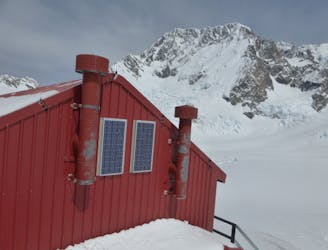
A collossal line and a truly world class ski face.
Extreme Ski Touring
- Distance
- 8.3 km
- Ascent
- 1.6 km
- Descent
- 1.7 km

A classic and popular mountaineering peak, this is the easiest of the big peaks to ski from the Plateau Hut.
Ski Touring Severe

One of the most classic peaks in New Zealand’s Southern Alps, Mt. Dixon is a very popular mountaineering peak and one of the easier summits to reach from the superbly positioned Plateau hut. The fact that it is somewhat overshadowed by its grander neighbors Aoraki/Mt. Cook and Mt. Tasmin does not in any way detract from it being a worthwhile endeavor. At just over 3000 meters elevation Mt. Dixon commands incredible views over the surrounding area and back down towards the Tasmin Glacier. Despite being a relatively easy mountaineering objective Mt. Dixon is a demanding ski descent reserved for steep skiers competent in 50-degree terrain.
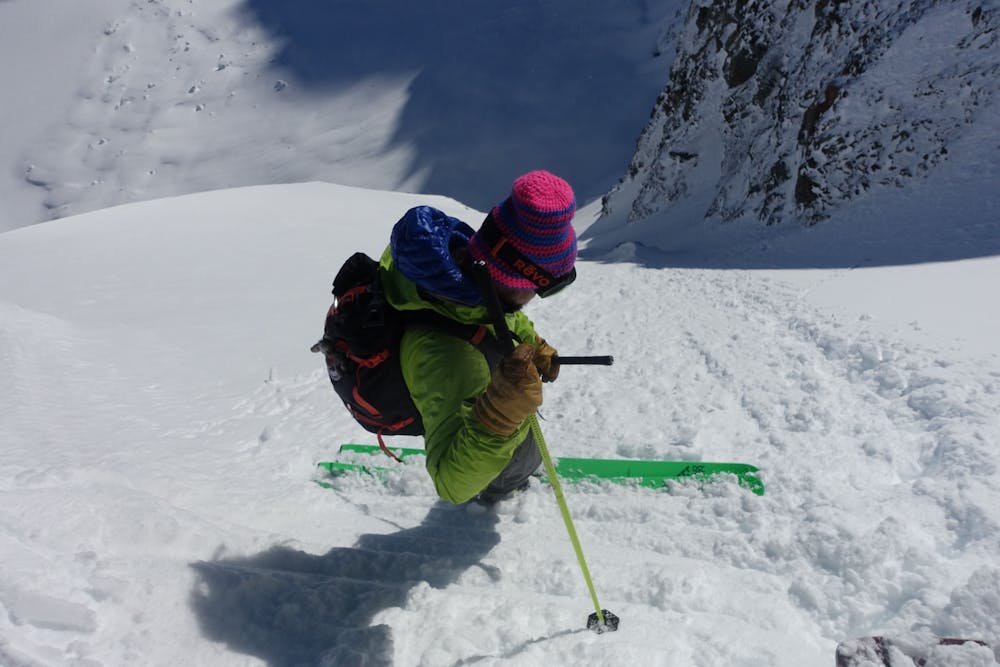
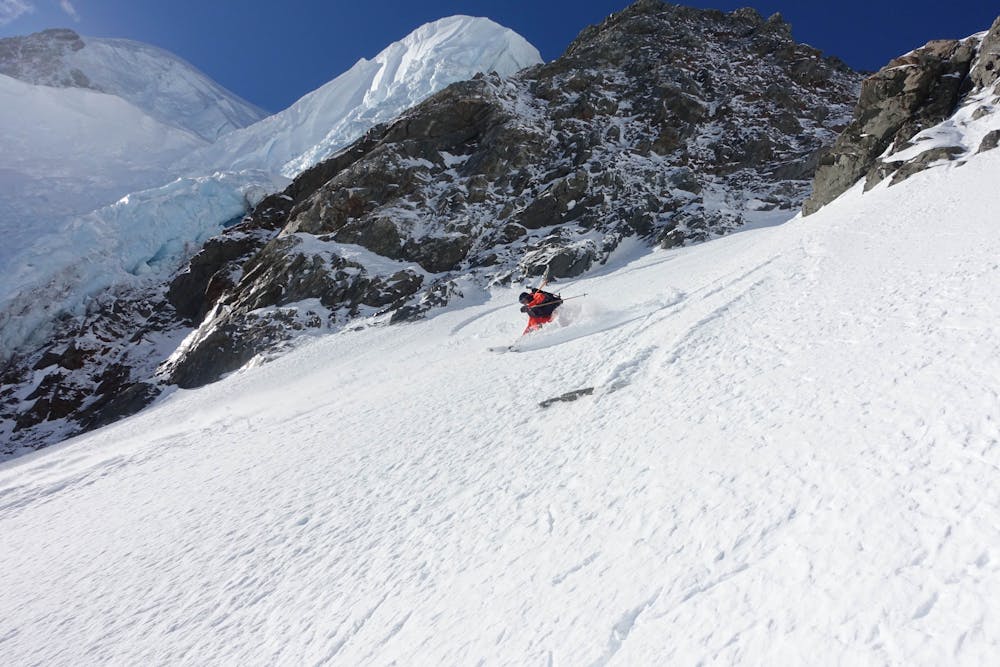
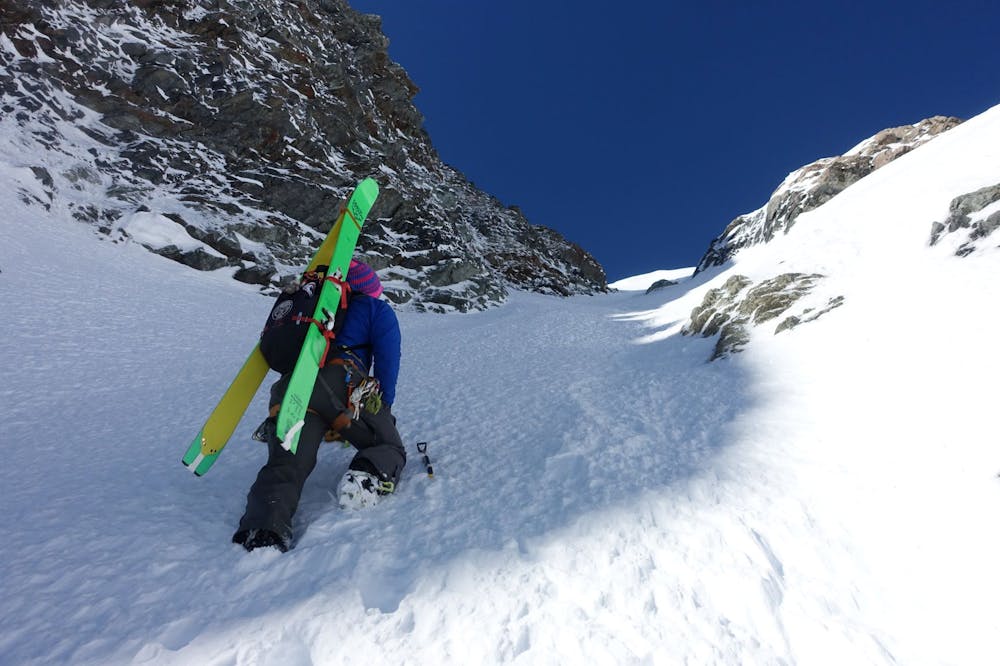
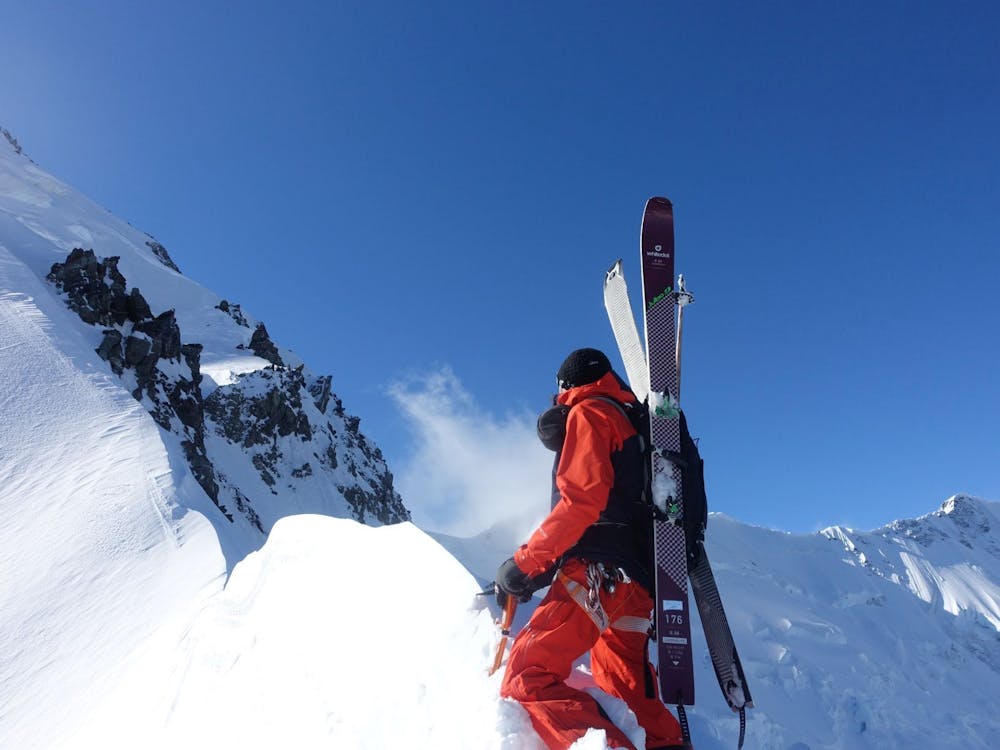
The most popular way to climb and ski the peak is via the south-east ridge starting from the Plateau Hut. Start up a steep south facing couloir. This is no place to linger as the initial slopes are exposed to an active hanging serac on the south face. This 50-degree couloir leads to an airy ridgeline. Follow the ridge up onto broader and less steep slopes until the summit is gained. The summit slopes are very exposed to the wind and can often be icy so take care on the way down. The couloir leading down from the ridge can often hold good cold powder on skier’s right side or transformed spring snow on skier’s left. This is the steepest section of the descent, but it is not very exposed.
An alternative way to ski the peak is to take the aesthetic hanging ramp above the serac directly on the south face. This is more exposed and serious although less steep.
Severe
Steep skiing at 38-45 degrees. This requires very good technique and the risk of falling has serious consequences.
16 m away

A collossal line and a truly world class ski face.
Extreme Ski Touring
144 m away
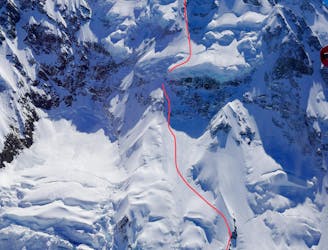
The largest and most mythical alpine face in New Zealand, it was first descended on skis in October 2017.
Extreme Ski Touring
9 km away

Superb spring skiing on a beautiful and open face.
Difficult Ski Touring
9.3 km away

A great and semi easy access ski tour on the West Coast
Moderate Ski Touring
9.3 km away
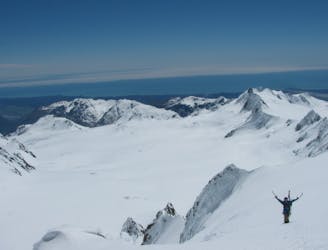
A stunning and semi-technical ski tour on the West Coast
Difficult Ski Touring
9.8 km away
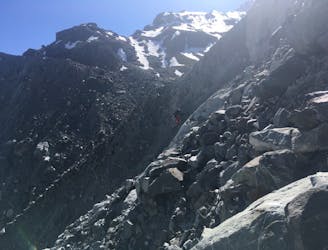
A very technical and spectacular line on a major peak
Extreme Ski Touring
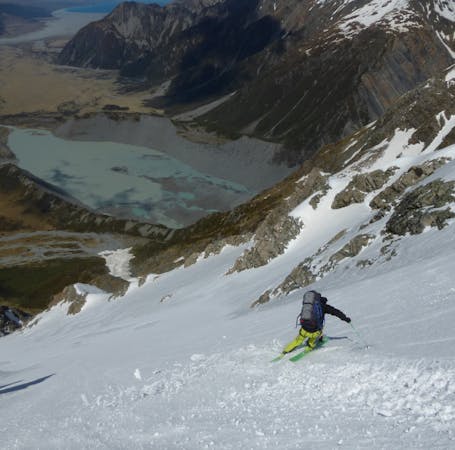
5 routes · Ski Touring

17 routes · Ski Touring